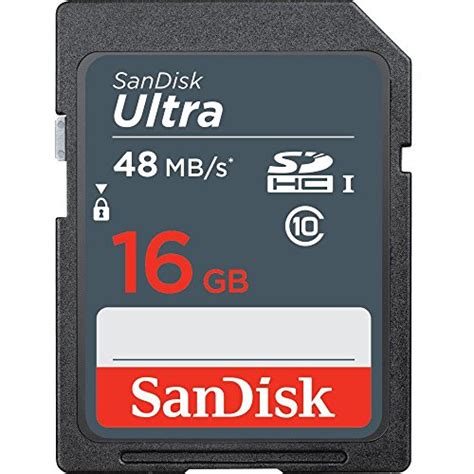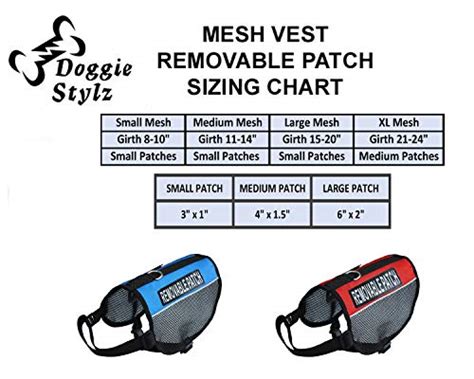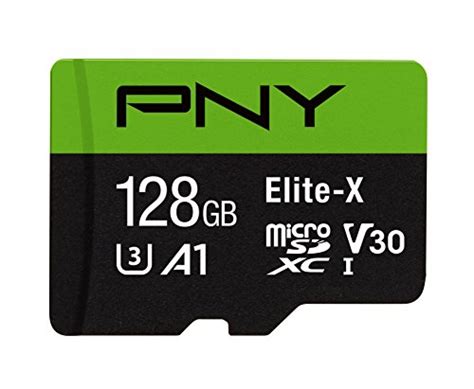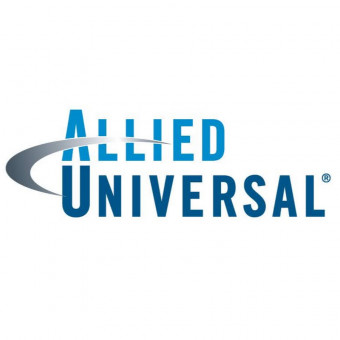
EdApp is a leading LMS microlearning platform offering all-inclusive solutions for corporate environments. The mobile-first learning platform includes an extensive library of over 50 templates geared for every type of learning style. Out of eight different categories, Survey Templates are geared to gather feedback from learners about your lessons to gather feedback, ratings, suggestions, and more to ensure you’re delivering the best training to your teams.
After the course participants have completed the survey, their responses will be transferred directly into your LMS. The templates offered by EdApp use different techniques to extract information – those can be descriptive, graphic or numeric values, which will later be transferred into the analytical engine for a comprehensive overview. EdApp templates include Free Text, Multiple Choice, Slider and Quadrant Matrix templates. This way, multiple values can be examined under a few angles (triangulation) which adds to the accuracy and complexity of the data.
Here we present 20 exemplary training survey questions which could be included in the final review of the course.
Taken from “Welding safety”, which is found in EdApp’s editable course library , the slide below is using the Slider Survey Template . This template allows you to collect numerical data as a survey response. The scalar slider makes it easy for the user to visualize their level of understanding of the subject and provides conveniently comparable data.
The statement “I feel more confident in my understanding of welding hazards after completing this lesson” is a good way to evaluate the transparency and efficacy of the course. The higher the average of the responses, the better the course prepares your team to perform even complicated tasks. Systematic review and repetition will help bring those results even higher.
This statement is taken from “Work Hard, Play Hard: Bringing fun into your workplace”. Again, the creators decided to use the Slider Survey Template to measure the level of efficacy of the course. Agreeing with the statement means that the lessons were well-designed and the information passed through. Moreover, the slider inquires about the readiness of the team member to put knowledge into action – the higher the score (which can be easily analyzed through EdApp’s user-friendly analytics suite) the higher the probability of seeing new socialization techniques in everyday office affairs.
This question from the “Anti-Bribery and Anti-Corruption” course available at Edapp’s editable course library. It is using the Free Text Survey Template . Free text template is perfect for collecting individual unprompted responses from the course takers. It allows you to reevaluate the contents of the course and perhaps, expand its coverage to aspects indicated as most useful for the users. Free text template collects comparative qualitative information, which could later be extracted and analyzed through EdApp’s user-friendly analytics suite.
This training survey example has been taken from the course “Spirits, Beer, and Wine” available through EdApp editable course library . It’s a Free Text Survey Template which allows your course members to express their thought, share opinions and give feedback. In this case, the creator of the course decided to introduce a personal touch to the course and inquired about the learner’s favorite drink. With this method, the new knowledge assimilated during the lesson is being attached back to the existing competence of the learner. Such questions provides also feelings of validity, exchange and acknowledgment of the learner’s passion, skill, and professionalism.
Taken from “The Art of Bussing” course, available in EdApp’s collection of free courses , the slide below shows a survey slide that features a Slider Survey Template . Using a slider template allows for an accurate evaluation of the assimilated material and the readiness of the course taker to put the knowledge into action. Responses bending towards higher scores indicate, that the course was comprehensive and exhausted the topic. Results drawn from the Slider Survey Template can be easily analyzed and reevaluated in the EdApp’s analytical suite.
This exemplary survey question was taken from the course “Chemical Storage and Handling” taken from the free editable course library available at EdApp. The slide uses a Multiple Choice Survey Template . Such a survey question is a quick and easy way to evaluate the content and user experience of the lesson. It checks, whether the level of the course is adjusted to the existing knowledge of the course taker and helps to improve the performance of the team members. The percentage breakdown of the answers can be quickly presented with the analytical suite available at EdApp.
This survey question was taken from the course “Dealing with difficult customers” is using a Free Text Survey Template. This template is perfect for summarizing the lesson and receiving feedback from the course takers. Your team members will be able to share their experience and perhaps provide a new perspective on how to best handle such situations. Research shows, that students are more likely to remember the content of the class if they can actively contribute to it – Free Text Survey Template was designed to give them this opportunity even in an online environment.
This survey question is taken from the course “5-minute desk exercises” available at EdApp free editable course library. It uses a Multiple Choice Survey Template which allows for collecting data for distribution. Simple “yes” and “no” answer can be turned into a statistical analysis of the efficacy of your course. This particular question asks for a declaration of multisensory knowledge: practical and theoretical, testing for manual dexterity. Multiple Choice Survey Template is a good way to evaluate the methods and tools used in transferring knowledge.
Taken from the “Handling Power Tools” course available in EdApp free course library, this survey question uses the Free Text Survey Template. This template leaves the course taker flexibility in expressing their own opinion, leaving feedback and sharing experience. In this question, the author falls back onto the content of the lesson and ask the team member for their personal statement on the issue of power tool injuries. Such a question is a great way to collect direct feedback from your coworkers and, in this case, provide adequate safety measures protecting the health and wellbeing of the employees.
Taken from the “Social Media and Electronic Communication” course available EdApp’s free editable course library, this slide uses Slider Survey Template. Sliders are a great way to evaluate your team members confidence and level of understanding of the new material. Here, numerical data drawn from the template will demonstrate how efficient the lesson was and if in the end, it provided your team members with the knowledge they needed.
This question could use a Slider Template and would help the auto-determine if the lesson needs improvement.
Here a Free Text Template could be used . Such a question could provide excellent feedback from the team members.
Here a Multiple Choice Survey Template could provide useful. Results would demonstrate if the course is well adjusted to the existing knowledge of the course taker.
Using a Multiple Choice Template, this question would provide feedback on the course design.
With a Free Text Template, this question could provide valuable personal input from the team members.
With the Slier Survey Template, this question could provide feedback on the relevance of the lesson and evaluate the existing knowledge of the users.
The Multiple Choice Template looks like the best choice for this question, which could provide information for the fine-tuning of the learning tools.
A Multiple Choice Template would demonstrate the readiness of the team members to take up new tasks.
A slider or Multiple Choice Survey could help ascertain the assimilation of the necessary information from the lesson.
A simple yes/no data (Multiple Choice Template) would assess the applicability and relevance of the course among the team members.
Training Survey Example #21 – Free Text Survey
The most popular type of survey used in EdApp is a free text survey. This allows a user to express anything they want.
This type of survey is great for letting learners speak their own mind. The main issue with using free text surveys, however, is that it lacks a quantitative component.
You may want to use this in a course to ask questions without definitive answers. This will let your students express themselves outside of the constraints of multiple choice or true/false type questions.
You can also use this in post-course surveys. You can ask about their favorite or least-favorite aspects of the course.
Creating a free text survey question in the lesson editor is simple. You only need to specify the question. Optionally, you can set text length limits on students’ answers.
Another training survey question that comes as a template in EdApp is the multiple-choice survey. This type gives the learner preset answers to choose from.
This is a good survey type to use because it is easy for learners to understand. It is limited, however, in that it doesn’t give them the same voice as a free text survey.
You can use this type during a course to see how your students feel about a particular topic. For example, you may want to poll them about what they think the answer to a question is before they learn the right answer during the lesson.
In a post-course survey, you can use multiple choice survey questions when you only want to consider specific answers. For example, you can ask them which lesson was the most memorable.
When choosing this survey question type, you have a few options to set in the EdApp lesson editor. You can decide how many answers are available as well as whether they are displayed in a random order or not. You can also choose the prompt text and the text to show after selecting an answer.
Another survey type is the quadrant survey. This type has learners drag and drop answers onto a chart.
This type of survey is good because it allows users to give feedback in a way that is very graphical. It may take a little extra time for learners to answer accurately, however, as they first need to decode how the x-axis and y-axis of each quadrant work.
You can use this type of survey question in a lesson when you want students to focus on categorizing something. For example, you might want to get their feelings on different types of sales techniques.
In a post-course survey, you could possibly have students put different course elements that liked or didn’t like into different areas of the chart.
To make this type of chart, you have to specify the various zones and words in the lesson editor. The zones are composed of an x-axis and y-axis term for each of the four quadrants. You can then add as many text answers as you like. As with the other survey types, you can set the prompt text and the text after finishing.
Slider surveys are also an option in EdApp. This type of survey gives you answers along a numerical scale.
This can be very useful because it allows you to analyze results to see averages, median values, and modes. One downside is that it doesn’t offer any way for students to give a qualitative evaluation on the topic.
A slider survey can be used in a lesson when you want students to predict a numerical value before you start the lesson and show them the answer. For example, you may ask them a percentage question which allows them to easily enter a value along the slider.
After the course, you may use a slider to get answers along a gradient. This can include questions with responses that range from ‘strongly disagree’ to ‘strongly agree.’
When selecting this survey type, there are several options to set in the lesson editor. You will need to set a minimum and maximum value for the number line. You can also add text prefixes or suffixes to each number. Furthermore, you need to specify the increment as well as how many decimal places to include for each number. You will also need to write out the minimum and maximum labels, such as ‘strongly agree’ and ‘strongly disagree.’
One more survey type that you can use is a simple yes/no survey. This is really just a variation of a multiple-choice survey, but is clear and to-the-point.
This type of survey is good because there isn’t much room for ambiguity. On the other hand, it can be rather limiting because learners can’t explain their reasons for their beliefs with just a simple yes/no answer.
You can use these to start off a lesson as you attempt to determine what the learners already know about a topic. For example, see if they agree with a statement that may sound intuitive, but actually is incorrect.
After the course, there are many situations where you could use yes/no questions to find out more about your learners’ experiences. These types of questions won’t give you the same depth of analysis as other types, like the slider or free text surveys, but they can still drive home a point.
Setting up a yes/no survey is the same as setting up a multiple-choice survey. Make sure you only have two answer choices: yes and no.
 Smead 100 Recycled Pressboard Classification File Folder 1 Divider 2quot Expan
Smead 100 Recycled Pressboard Classification File Folder 1 Divider 2quot Expan
 Classic Accessories Veranda Water Resistant 11 Foot Patio Umbrella Cover
Classic Accessories Veranda Water Resistant 11 Foot Patio Umbrella Cover
 Sandisk 16 Gb Class 10 Sd Hc Ultra Flash Memory Card 10 Pack Bundle With
Sandisk 16 Gb Class 10 Sd Hc Ultra Flash Memory Card 10 Pack Bundle With
 Fairwin Braided Leather Dog Training Leash 6 Foot 56 Foot Military Grade H
Fairwin Braided Leather Dog Training Leash 6 Foot 56 Foot Military Grade H
 3m Reflective Dog Leash 5ft Long With Traffic Padded Handle Dog Training Leas
3m Reflective Dog Leash 5ft Long With Traffic Padded Handle Dog Training Leas
 How To Be Your Dogs Best Friend The Classic Training Manual For Dog Owners
How To Be Your Dogs Best Friend The Classic Training Manual For Dog Owners
 Classical Naptime For Tots
Classical Naptime For Tots
 Doggie Stylz Set Of 2 Reflective Therapy Dog In Training Removable Patches Wit
Doggie Stylz Set Of 2 Reflective Therapy Dog In Training Removable Patches Wit
 6 Pcs Service Dog In Trainingworkingstress Amp Anxiety Response Embroidere
6 Pcs Service Dog In Trainingworkingstress Amp Anxiety Response Embroidere
 Service Dog In Training Patch With Hook Back And Reflective Lettering For Servic
Service Dog In Training Patch With Hook Back And Reflective Lettering For Servic
 Four Paws Wee Wee Pee Pads For Dogs And Puppies Training L Gigantic Xl St
Four Paws Wee Wee Pee Pads For Dogs And Puppies Training L Gigantic Xl St
 Pny 128gb Elite X Class 10 U3 V30 Microsdxc Flash Memory Card 100mbs
Pny 128gb Elite X Class 10 U3 V30 Microsdxc Flash Memory Card 100mbs














